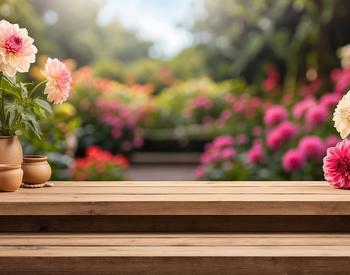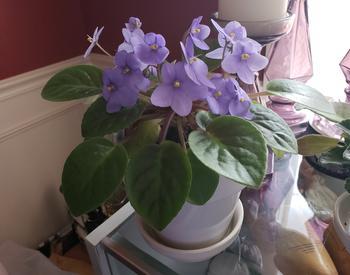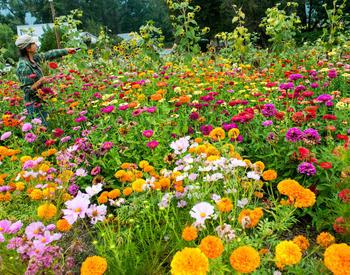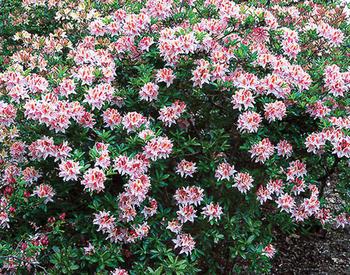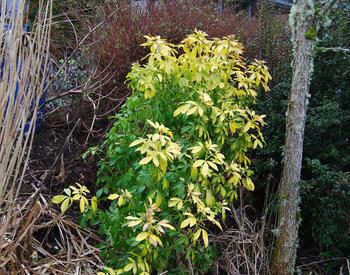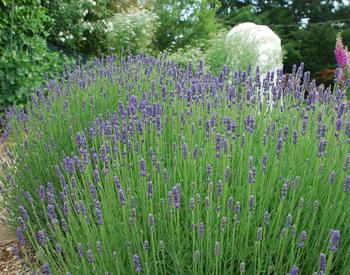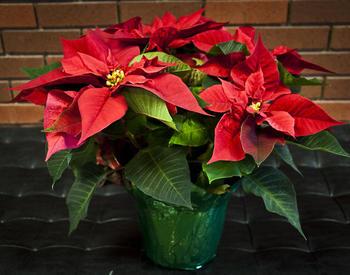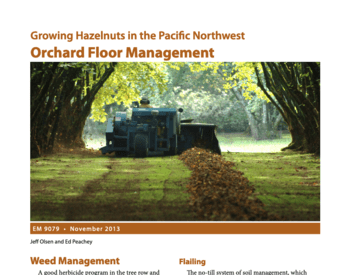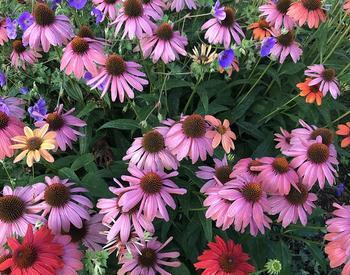Most modern roses make good landscape companions because they repeat bloom. You may want to investigate some of the Old Garden Roses as they also have excellent landscape benefits. Most OGR will bloom only once a season, but the length of the bloom time is what is spectacular about them.
The category of Old Roses remains one of the most misunderstood and confusing. According to history this group includes species and many hybrid species roses that are a result of common classes in Europe before the influx of Chinese roses in the nineteenth century. The category of Old Garden Roses was closed in 1867 when the Hybrid tea "La France" was introduced as a modern rose.
The term "Old Garden Roses" still can cause confusion because some items may have been introduced after 1867. The reason for this is that a newly developed rose carries the OGR designation because it does belong to one of these Old Garden Rose classes. Nurseries may call a plant an "antique rose" or an "old garden rose," but the rose may not truly be an Old Garden Rose.
Subdivisions of Old Garden Roses
Species and Hybrid Species
Species roses are naturally occurring wild roses collected from any location. Most have five petals. As garden subjects, species roses are delightful and varied. Some are suitable for hedges, and others have sprawling growth habits that make for good ground covers. There are about two hundred species roses altogether. This class of rose is one of the most varied due to natural growing conditions and location of the particular rose.
Gallica, Alba, Damask, Centifolia, and Moss
This group contains five individual classes, and all are different. Gallicas are shorter than Albas. The Centifolia has the fullest looking flowers in existence and is commonly referred to as a cabbage rose. The Damasks tend to be pink, and you will recognize a Moss rose by the glandular hairs covering its buds. As a group these roses bloom once and do best if given some afternoon shade and a well mulched bed so the plant will not get water stressed.
Chinas
The original roses from this class were brought from China to Europe where they were widely bred with other classes. The results were repeat-blooming plants, and they changed the Western world of roses. The China varieties are rather delicate in appearance with neatly pointed leaves. Blooms commonly are in shades of pink, copper, and red. Flowers have a sweet, fruity fragrance and bloom constantly. The plant form ranges from dwarf bushes to vigorous climbers.
Teas
These roses are similar in history and cultivation to the Chinas. Roses in this class tend to form chunky, v-shaped shrubs and are well covered with foliage and flowers, most of which are pastel and some shades of red. This rose is uniquely scented with a perfume that reminds some people of tea. If pruned severely, the plant may sulk for a season and produce only a few blooms. This rose will grow slowly at first, but after two or three years it will increase in size.
Noisettes
Noisettes are erect shrubs, and most are large climbers. The flowers tend to be pastel and are known for their large clusters. These plants are tolerant of clay soils.
Bourbons
Named for a French ruling class, these roses tend to have large flowers and are richly scented with rose perfume. The flowers are often three to a cluster. Growth habit is rather leggy and some may have a chunky shrub form.
Hybrid Perpetuals
This rose is the pre-twentieth-century equivalent of the Hybrid Teas. They have huge flowers and sometimes are stiff and awkward. Most Hybrid Perpetuals are repeat bloomers and have a strong delicious fragrance.
Good Old Garden Roses
I have grown all these roses for some time in a garden with no spraying and high disease pressure. All stand up well with little or no defoliation. The ones listed here are all real winners. All prefer full sun, but Rosa alba, Rosa multiflora do pretty well with partial or light shading. All these roses are highly resistant to the common rose diseases. Some get some mildew towards the end of the season, but not enough to worry about. All are fragrant. Most are shrub roses, but there are a few tea and floribundas in the mix.
| Rose | Color | Fragrance | Repeat? | Comment |
|---|---|---|---|---|
| Scentimental | Red and white | Strong | Yes | Floribunda |
| Wonderstripe | Rose and white | Strong | Yes | Floribunda |
| Celsiana | Pale pink | Strong | No | Damask clusters |
| Amber Queen | Amber pink | Strong | Yes | Floribunda |
| Hansa | Magenta | Medium | Yes | Rugosa, shade |
| Topaz Jewel | Pale yellow | Medium | Yes | Rugosa, shade |
| Buff Beauty | Apricot | Strong | Yes | Musk, some blackspot |
| Rosa Robusta | Scarlet | Medium | Yes | Lg. Singles |
| Fru Dagmar Hastrup | Pink | Medium | Yes | Rugosa |
| Apothecary Rose | Magenta | Medium | No | Very old, Gallica |
| Rosa Alba | White to pink | Medium | No | Very large bush, shade |
| Rosa Multiflora | White | Medium | No | Clusters |
| Lavender Lassie | Pink/lilac | Light | Yes | Sprawling, tall |
| Eutin | Very red | Light | Yes | Floribunda |
| Blanc Double de Coubert | White | Strong | Yes | Rugosa |
| Robin Hood | Rose pink | Medium | Yes | Musk, clusters of small flowers |
| Anisley Dickson | Salmon pink | Very strong | No | Floribunda, floppy |
| Oranges & Lemons | Yellow and orange | Strong | Yes | Climber |
| New Dawn | Pink | Strong | Yes | Climber |
